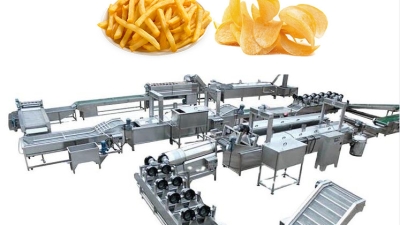5 Essential Tips for Optimizing Your Frying Production Line Efficiency
Table of Contents
- Leveraging Technology to Monitor Cooking Temperatures Accurately
- Streamlining Ingredient Preparation for Enhanced Workflow Efficiency
- Implementing Automated Quality Control Checks in Frying Processes
- Optimizing Equipment Maintenance Schedules to Minimize Downtime
- Utilizing Data Analytics to Identify Production Bottlenecks
- Enhancing Staff Training for Consistent Operation and Safety Standards
- Maximizing Efficiency with the 500kg/h & 1000kg/h Fully Automatic Frozen Potato Fries Production Line
- FAQS
- Conclusion
- Related Posts
Hey, if you're involved in the fast-moving world of food manufacturing, you know how important it is to optimize your Frying Production Line. It’s all about boosting efficiency and cutting down those pesky operational costs. I read somewhere—shoutout to Grand View Research—that by 2026, the global market for commercial frying equipment could hit around $4.7 billion. That just goes to show how much people are really craving more efficient frying systems these days.
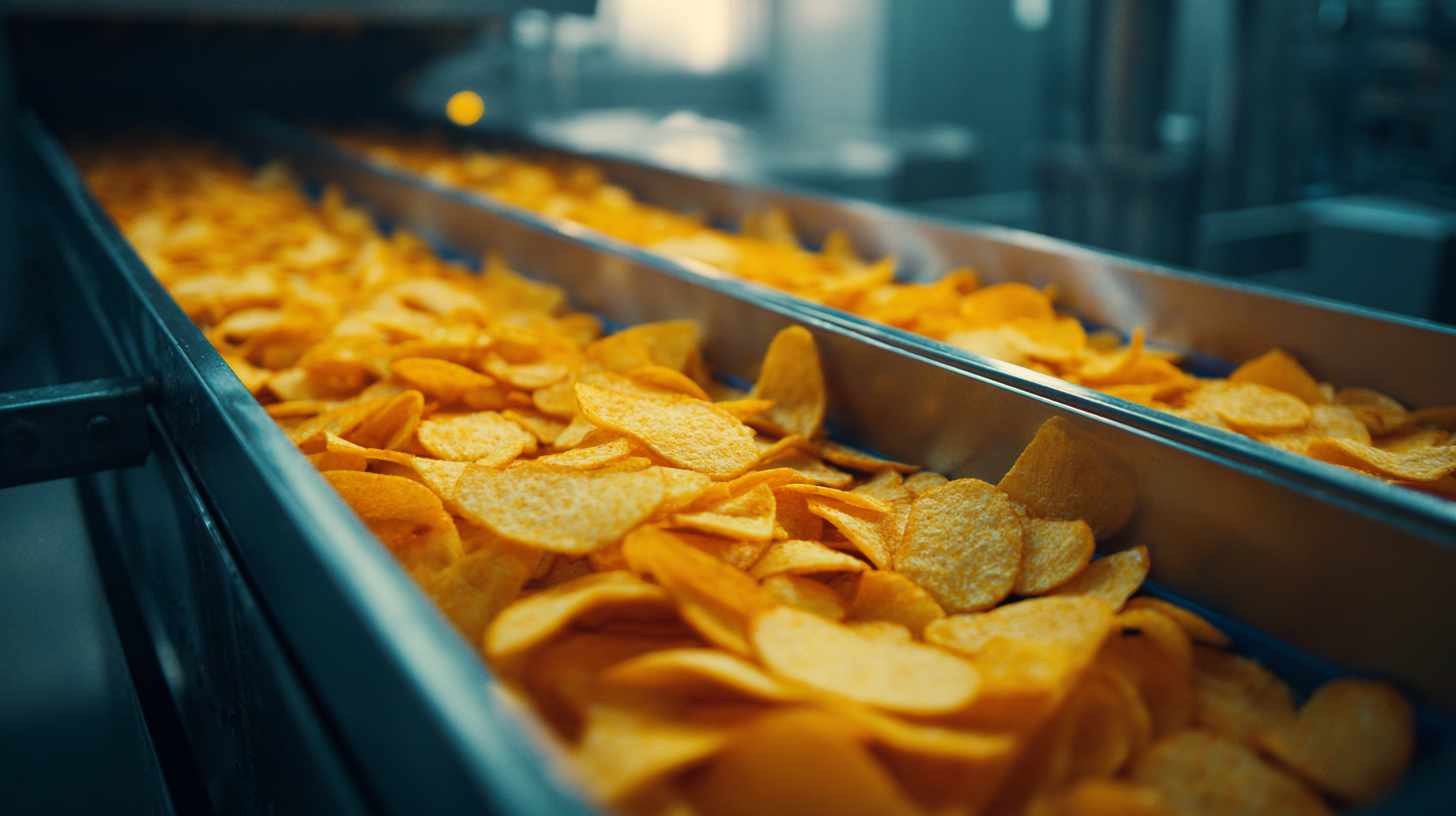
Companies like Shandong Kexinde Machinery Technology Co., Ltd. totally get this trend and are dedicated to offering innovative food machinery solutions that fit various industries, including food and drinks. As manufacturers push for better efficiency, having a solid plan to streamline frying processes can pay off big time—think better product quality and energy savings. With all these insights in mind, I wanted to share five key tips to help you make your Frying Production Line run more smoothly. That way, your operations stay competitive, even as the market keeps changing fast.
Leveraging Technology to Monitor Cooking Temperatures Accurately
Nowadays, keeping a close eye on temperatures in modern frying lines is super important—not just for making sure the food tastes great but also for safety reasons. Thanks to some pretty cool tech advancements, especially AI and the Internet of Things, managing these temperatures has become a lot easier and more reliable. I’ve read that many companies are already using AI tools to spot potential food contaminants, which really boosts safety and cuts down on risks. By using real-time data from temperature sensors sprinkled throughout the line, folks working in production can make sure everything’s running within the safe and ideal temperature ranges. This not only improves the overall quality but also keeps things consistent.
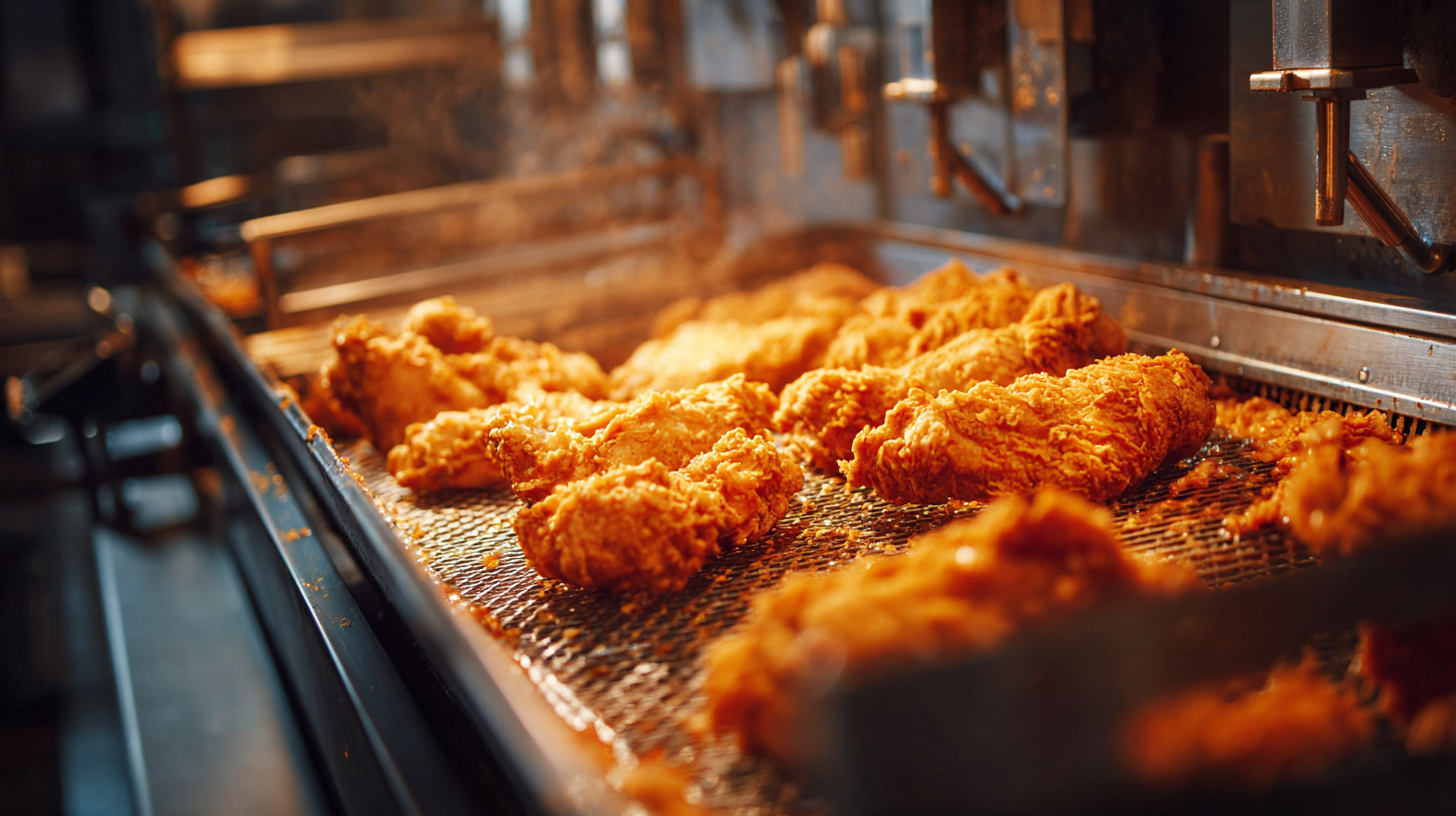
And then there’s IoT tech, which offers awesome data analytics capabilities. It’s like having a super-smart watchdog constantly watching over equipment to spot issues early and even predict maintenance needs. Industry reports show that big data in the food world is exploding—making operations smoother and decision-making way more efficient. Automated alerts now warn staff when temperatures drift out of bounds, so quick fixes can be made before anything goes wrong, saving both time and money. As these technologies keep evolving, the opportunities to perfect frying processes and boost food safety are honestly pretty exciting for manufacturers eager to get more efficient and reliable with their production lines.
Streamlining Ingredient Preparation for Enhanced Workflow Efficiency
In the busy world of food production, making ingredient prep smoother is pretty much essential if you want things to run more efficiently. I came across a report from the Food Processing Association that says tweaking your workflow can bump up productivity by as much as 30%. That’s a pretty big deal, especially in frying lines where timing and ingredient quality really impact the final product. Switching to automated ingredient dispensers can cut down on manual work and cut down waste too—saving money and giving you a better quality overall.
Here’s a handy tip: use color-coded containers for different ingredients. Honestly, this little trick can speed things up big time because staff can spot what they need instantly, which cuts down on delays and mistakes. Also, investing in large-capacity food processors helps get those bulk ingredients ready faster, so you can switch gears between batches more smoothly.
Focusing on the prep phase—using good mixing machines and pre-prepped ingredients—can seriously cut down the time spent switching between frying processes. Some studies even show that upgrading your prep tech can slash total production cycle times by around 20%. Basically, putting these strategies in place not only boosts efficiency but also makes the whole operation run a lot more smoothly.
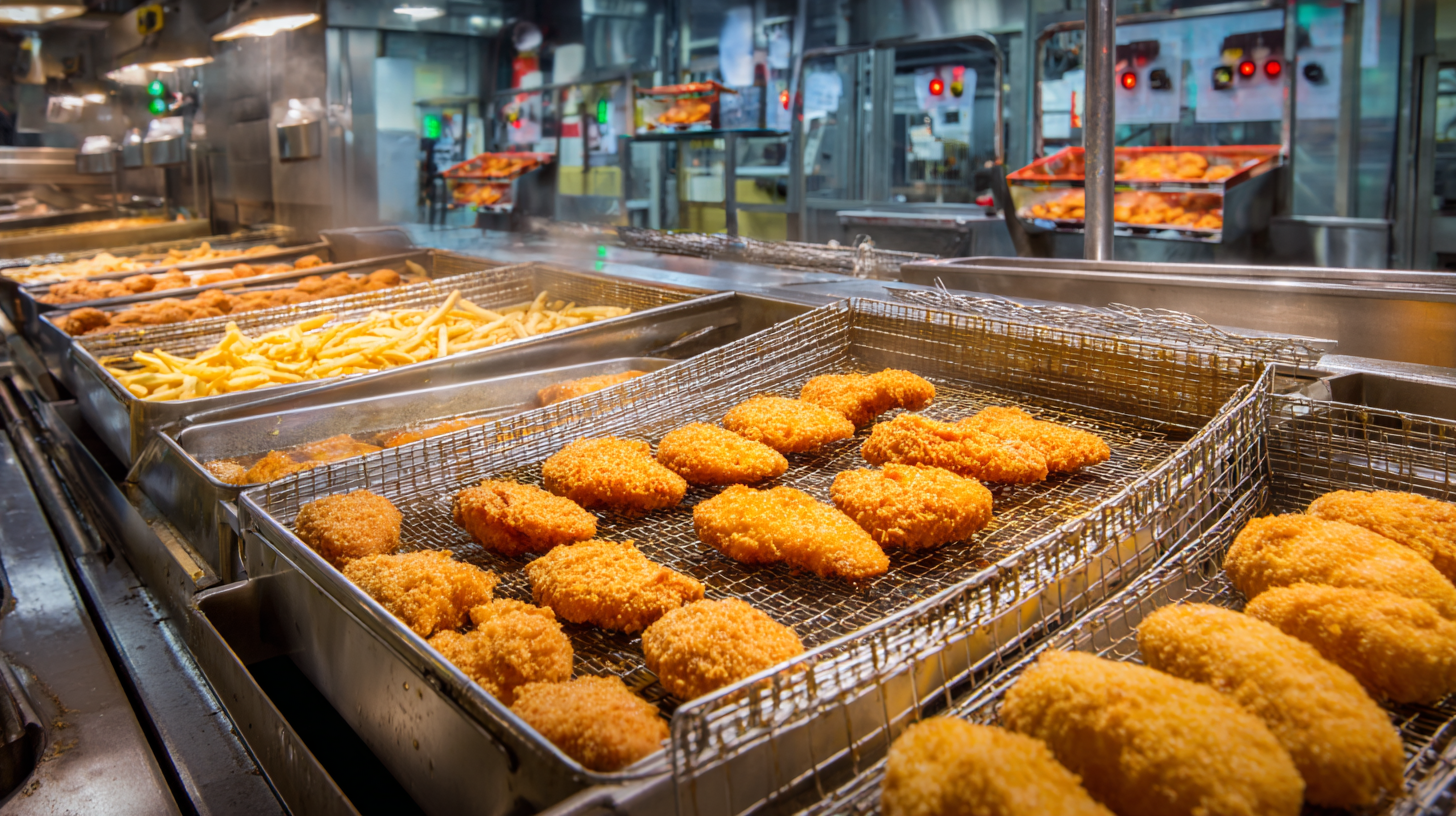
Implementing Automated Quality Control Checks in Frying Processes
So, implementing automated quality checks during frying — honestly, it's a total game-changer when it comes to making production lines run smoother. I read a recent report from the Food and Beverage Industry Association, and it turns out that about 30% of the production hiccups actually stem from inconsistent product quality, which ends up wasting a lot of resources and hitting profits hard. The cool part? These new automated systems can really cut down on that. They make sure every batch hits the right quality standards, so you’re not just relying on humans inspecting things — which, let's be honest, can sometimes be prone to mistakes.
By tapping into tech like machine vision and sensors that monitor in real-time, you get instant alerts if something's off — like if there's oil contamination or if the product's the wrong size. A study from the Institute of Food Technologists showed that companies using these automated checks saw about a 20% drop in product recalls and a 15% boost in overall production output. Not only does this mean customers get a more consistent product, but it also helps companies stay competitive in a fast-moving market where efficiency is everything. Honestly, these tech upgrades are really making a difference!
Frying Production Line Efficiency Optimization
This bar chart illustrates the time spent on different stages of the frying production process. By analyzing these times, manufacturers can identify areas for improvement to enhance overall efficiency and implement automated quality control checks effectively.
Optimizing Equipment Maintenance Schedules to Minimize Downtime
In the hectic world of frying production, keeping your equipment in good shape is super important if you want to keep things running smoothly and avoid costly downtime. It turns out that businesses can boost their productivity by as much as
20%
just by sticking to a proactive maintenance plan. For instance, scheduling regular checks and servicing after every
500 hours
of operation can really help cut down on surprise breakdowns and also make your equipment last longer. It’s kind of like giving your machines
regular check-ups, right?
According to the Food Processing Industry Association, unexpected shutdowns can cost manufacturers a staggering
$260,000 per hour—that’s no small chunk. To avoid those hits, many folks are turning to tech like
IoT sensors
for predictive maintenance. These tools give you real-time updates on how your machinery is doing, so you can step in right before things go
haywire. Plus, following the manufacturer’s recommended maintenance routines can make a huge difference in keeping your production line
efficient
and dependable. Regularly reviewing and tweaking your maintenance schedule based on actual usage and performance data is also a big help in
keeping the frying process running smoothly and maintaining good product quality—because at the end of the day,
consistency is everything, right?
Utilizing Data Analytics to Identify Production Bottlenecks
In today’s really competitive world of food manufacturing, using data analytics isn’t just a buzzword — it’s pretty much essential if you want your frying production line to run smoothly. I read somewhere recently, from a report by the Food Processing Technology Advisory, that companies who started looking at their data saw about a 20% drop in downtime. That’s a big deal! It’s all about catching those bottlenecks early — like if equipment’s acting up or processing is slow — because those little hiccups can really mess with your overall output.
And honestly, data isn’t just about spotting problems — it’s about making smarter decisions, too. There was this study in the International Journal of Food Engineering that showed how using predictive analytics in frying lines could boost productivity by up to 30%. How? Well, mainly because you can plan better maintenance based on real-time info on how your machines are doing. By keeping an eye on key performance indicators (or KPIs), manufacturers can make their processes more efficient and keep the product quality top-notch — which, let’s be real, is what keeps customers coming back. As the industry keeps changing, the ones who really get what data can do will definitely stay ahead of the game.
Enhancing Staff Training for Consistent Operation and Safety Standards
Improving staff training is honestly one of the most important steps you can take to boost how efficiently your frying production line runs. I came across a study by the Food and Beverage Manufacturing Association that says about 30% of production downtime is due to human errors—mostly because folks aren't fully trained. When workers know their stuff—like how to operate machines, do proper maintenance, and stick to safety rules—they're way less likely to make mistakes that could cause costly shutdowns. That's why having a solid, all-in training program really helps. It can set clear procedures and remind everyone of the best practices, which makes a big difference.
And it doesn’t stop there. Ongoing training is key, especially when it comes to safety. The National Safety Council reports that proper safety training can cut workplace accidents by up to 25%. In a frying line, where hot equipment and high temperatures are always a concern, keeping everyone up-to-date on safety protocols is a must. Regular workshops and safety drills not only give staff the confidence to handle situations but also promote a safety-first mindset throughout the team. Bottom line: investing in good training isn’t just about keeping things running smoothly; it’s also about making sure everyone stays safe while doing their jobs.
5 Essential Tips for Optimizing Your Frying Production Line Efficiency
| Tip | Description | Benefits | Frequency of Training |
|---|---|---|---|
| 1. Comprehensive Safety Training | Provide thorough training on safety protocols and equipment handling. | Reduces accidents, enhances employee confidence. | Quarterly |
| 2. Regular Technical Skills Training | Update staff on the latest frying techniques and technologies. | Improves efficiency and product quality. | Monthly |
| 3. Standard Operating Procedures (SOP) Review | Ensure all staff understand and follow standardized procedures. | Consistency in operations, minimizes errors. | Bi-annual |
| 4. Cross-Training Employees | Train employees to perform multiple roles within the frying line. | Increases flexibility and reduces downtime. | Annually |
| 5. Feedback and Continuous Improvement | Encourage feedback from staff on processes and safety. | Enhances morale and leads to process improvements. | Ongoing |
Maximizing Efficiency with the 500kg/h & 1000kg/h Fully Automatic Frozen Potato Fries Production Line
The quest for efficiency in food production has become more critical than ever as the demand for frozen potato fries continues to rise. According to industry reports, the global frozen potato products market is expected to grow at a CAGR of around 4.5% from 2021 to 2026, driven by increasing consumer preferences for convenience foods. In this context, the 500kg/h and 1000kg/h fully automatic frozen potato fries production lines offer an innovative solution for manufacturers looking to boost their output without compromising on quality.
These fully automatic production lines are designed to optimize efficiency at every stage of the fry-making process. The equipment is capable of handling high volume operations while ensuring consistency in product quality and flavor. Customizable to meet varying capacity needs, these lines can cater to both small and large scale operations. With advanced frying technology, which includes pre-treatment, frying, cooling, and packaging, manufacturers can significantly reduce labor costs and time, thus enhancing overall productivity.
Furthermore, as sustainability becomes increasingly important in the food processing industry, these production lines are built with energy-efficient technology that not only reduces operational costs but also minimizes waste. Reports indicate that integrating automation in food production can lead to a 20-30% increase in efficiency, making the 500kg/h and 1000kg/h lines a smart investment for any business aiming to stay competitive in the bustling market for frozen potato fries.
FAQS
: Accurately monitoring cooking temperatures is crucial for both quality control and food safety, as it ensures that frying conditions remain within safe and optimal ranges, enhancing product quality and consistency.
Advanced technology like artificial intelligence (AI) and the Internet of Things (IoT) enhances temperature management by providing real-time data from temperature sensors, allowing operators to monitor conditions and respond quickly to any deviations.
AI-driven technologies help detect food contaminants, optimizing safety and minimizing risks, which is essential for maintaining food quality throughout the production process.
IoT technologies provide vital data analytics capabilities that enable constant equipment monitoring and predictive maintenance, leading to increased operational efficiency and better decision-making processes.
Automated systems can alert staff to temperature deviations, allowing for quick corrective actions that reduce waste and enhance overall efficiency in the production line.
Streamlining ingredient preparation can increase productivity, and methods like automated ingredient dispensing systems and color-coded containers for ingredients can help speed up the process, reduce waste, and minimize errors.
Investing in advanced preparation technologies can yield a 20% reduction in total production cycle times, contributing to a more efficient operation.
Using color-coded containers for different ingredients allows staff to quickly identify and access necessary materials, reducing downtime and potential errors in the preparation process.
Optimizing workflow can lead to significant increases in productivity, with some reports indicating improvements of up to 30% in food production environments, particularly in frying production lines.
Conclusion
Hey there! If you want your frying production line to run smoothly and produce top-notch products, it's pretty much essential to optimize that process. Using technology to keep a close eye on cooking temperatures — like, really accurate monitoring — can make all the difference when it comes to getting consistent, high-quality fried goods. Plus, streamlining how you prepare ingredients and bringing in automated quality checks? That’s a game-changer for boosting efficiency and cutting down on mistakes.
Don’t forget about maintenance, either. Making sure your equipment is regularly checked and maintained helps avoid unexpected breakdowns and keeps everything flowing without a hitch. And hey, tapping into data analytics can actually help spot any bottlenecks before they turn into big headaches, so you can jump in with solutions early on. Last but not least, investing in proper training for your staff makes a huge difference. When everyone knows the safety protocols and operational best practices, the whole setup becomes safer and way more efficient.
With tips like these, companies like Shandong Kexinde Machinery Technology Co., Ltd. are totally able to ramp up their production game in this competitive food machinery market. It’s all about working smarter, not harder!
Related Posts
-
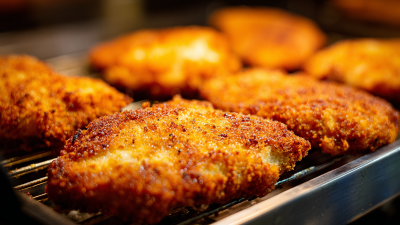
7 Essential Benefits of Using a Fried Chicken Breading Machine for Your Business
-
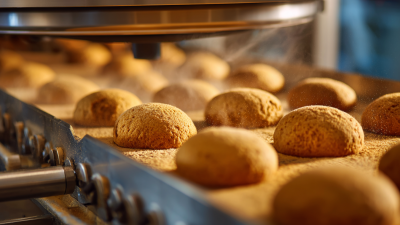
Solutions for Sourcing the Most Efficient Breadcrumbing Machines Worldwide
-

Common Challenges Faced with the Best Industrial Tray Washing Machines
-

How to Choose the Best Automatic Chips Making Machine for Your Business Needs
-

Choosing the Right Manufacturer: Top Solutions for Your Best Crumb Coating Machine Needs
-

2025 Yearly Insights on Best Tray Washer Market Growth Exceeding 20 Percent Worldwide


